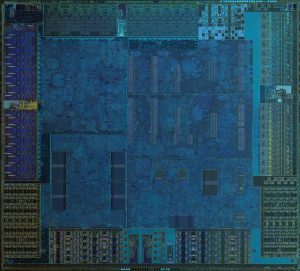Different Methods of Sticker Cutting
Different Methods of Sticker Cutting
Sticker cutting is a great way to add a unique touch to your products or brand. There are several different ways to cut stickers, including freehand drawing, stenciling, and using a sticker cutting machine.
One popular method is to use a die-cut sticker. This type of sticker is cut through both the vinyl sticker layer and paper backing. This gives them a clean, professional look.
Hand-cutting
Sticker-making is a fun and rewarding hobby. By planning your Car Film Wrapping designs thoughtfully and using high-quality materials, you can produce professional-looking stickers that captivate your audience. Whether you want to hand-cut or use a cutting machine, there are many different methods that will allow you to achieve polished results.
The easiest way to cut stickers is by hand with a pair of scissors. However, this method can leave jagged edges. To avoid this, carefully align your scissors with the edge of the sticker you want to cut. Then, snip slowly and evenly along the line.
Another option is to use a paper trimmer to cut your stickers. This is a more precise method than the hand-cutting technique. Using a paper cutter can also make your stickers look more organized. However, this technique can be time-consuming and tedious.
Lastly, you can use an exacto knife to cut your stickers. This method can be difficult, but it can also be very effective if you’re careful and patient. The most important thing is to use a sharp knife, which will make it easier to cut accurately and quickly. Also, be sure to keep your blade razor-sharp so that it doesn’t deteriorate over time. A dull blade will create uneven cuts and be harder to handle. Also, be sure to protect your fingers from any potential cuts with gloves or a cutting mat.
Digital printing
Digital printing is a modern and fast method of producing images and graphics. The process involves mapping out an image on a chosen surface – be it a custom shirt, a Tumbler or a tote bag – and using minute droplets of ink to transfer the design onto that surface. Digital printing has a much shorter turnaround time than traditional methods, and is also more eco-friendly. It saves a lot of paper, ink and energy, which can help reduce CO2 emissions.
To produce high-quality stickers you need to use a high-quality printer with large-format capability. You should also choose from a range of different materials to ensure that your stickers are durable and can withstand the elements. Some examples of popular materials include paper, crack-and-peel vinyl and clear or metallic inks.
Once you’ve created your sticker design, you can choose between a cut-to-size or roll sticker format. The latter is ideal for larger orders and makes them easy to apply, while the former is better for individual, promotional giveaways. You can also opt for a laminate or a clear protective coating for an extra layer of durability and shine. The Roland DG TrueVIS VG3 is a powerful print/cutter that can deliver high-quality, full-color stickers and labels in all shapes and sizes. Use it to create a variety of different designs, add glossy and matte finishing touches or even simulated embossing.
Stenciling
Stenciling is a versatile technique that allows you to create a variety of images sticker cutting on paper crafting projects. It can be used to create a custom background for a card, or to make a unique frame for a painting. The most popular inks for stenciling are dye, pigment, and mixed media. Dye inks are the most durable, but they tend to be less flexible than other types of inks.
Stencils are also a common element in street art, and can be found on walls around the world. Some of the most well-known stencil artists include Blek le Rat, Above, and Shepard Fairey. These artists are highly influenced by graffiti culture, and many of them are anonymous. Their work reflects the political unrest that is prevalent in modern society.
When using stencils, it is important to remove any residue left behind by spray adhesive before storing them. This will protect the stencil and prevent it from becoming ruined by any leftover spray adhesive. You can use a damp cloth to clean the stencil or one of the cleaning solutions sold in most craft stores.
When applying paint or gilding with stencils, be sure to start from the edges and work toward the center. This will help to avoid bleeding and blotches. If you’re using a stipple brush, roller, or sponge, it’s best to apply the paint slowly and with a light up-and-down motion.
Freehand drawing
Freehand drawing is a type of sketching where the artist draws on paper without using any guiding tools or reference materials. It can be used for artistic and technical purposes. It is also useful for enhancing the artist’s confidence and skills. It is also an excellent way to practice muscle memory. The practice of freehand drawing also increases the artist’s imaginative powers and visual abilities. It is a great tool for capturing the essence of movement in portraits, figure drawings, and landscapes. It can even be used in graffiti art, which is known as street art.
When it comes to sticker-making, hand-cutting is one of the most traditional and straightforward methods. This technique is quick and easy, and it allows for customization and uniqueness, making it perfect for a variety of applications. It can be difficult to cut out complex designs and detailed shapes, though, so it is important to take your time.
Another easy method for sticker-making is to use a sheet of printable stickers. Choose a high-quality sticker paper that is waterproof, then print your designs on it. Next, cover the stickers with a clear lamination sheet and cut them into smaller shapes with scissors or a craft knife. This method is ideal for creating patterned or decorative stickers, as it makes the finished product look more professional.
